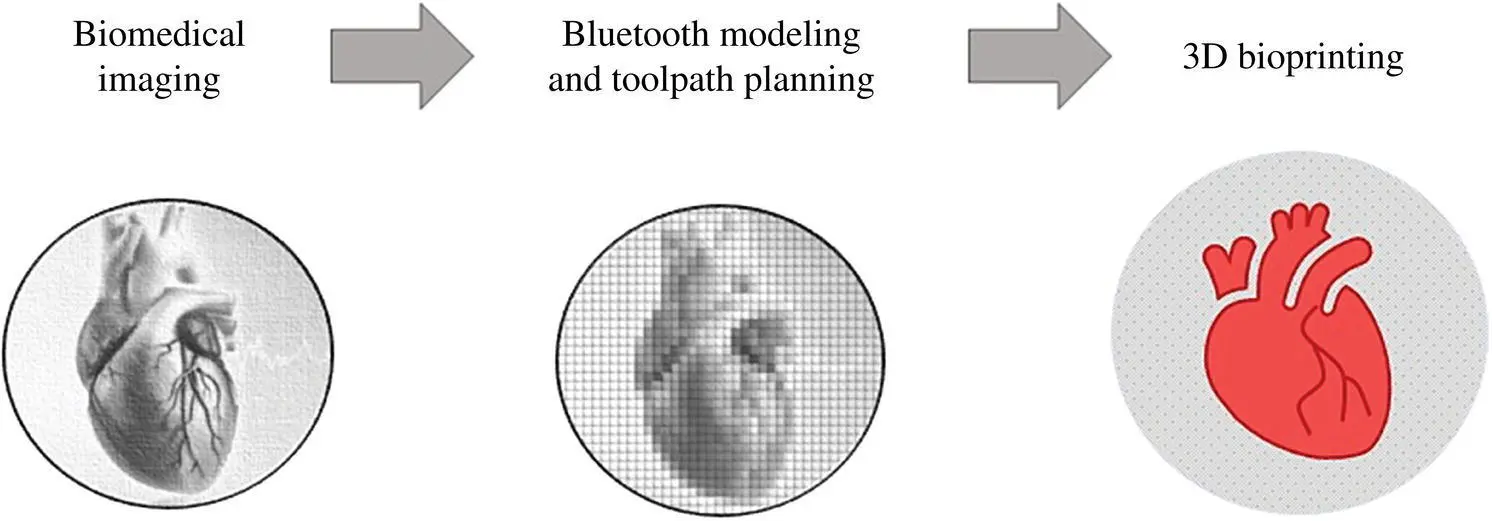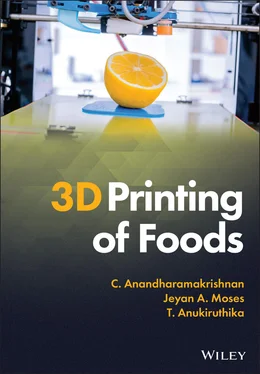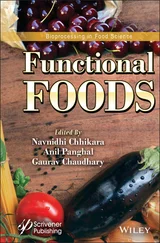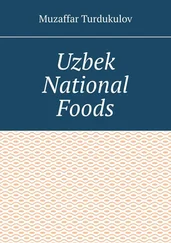C. Anandharamakrishnan - 3D Printing of Foods
Здесь есть возможность читать онлайн «C. Anandharamakrishnan - 3D Printing of Foods» — ознакомительный отрывок электронной книги совершенно бесплатно, а после прочтения отрывка купить полную версию. В некоторых случаях можно слушать аудио, скачать через торрент в формате fb2 и присутствует краткое содержание. Жанр: unrecognised, на английском языке. Описание произведения, (предисловие) а так же отзывы посетителей доступны на портале библиотеки ЛибКат.
- Название:3D Printing of Foods
- Автор:
- Жанр:
- Год:неизвестен
- ISBN:нет данных
- Рейтинг книги:3 / 5. Голосов: 1
-
Избранное:Добавить в избранное
- Отзывы:
-
Ваша оценка:
- 60
- 1
- 2
- 3
- 4
- 5
3D Printing of Foods: краткое содержание, описание и аннотация
Предлагаем к чтению аннотацию, описание, краткое содержание или предисловие (зависит от того, что написал сам автор книги «3D Printing of Foods»). Если вы не нашли необходимую информацию о книге — напишите в комментариях, мы постараемся отыскать её.
Explore the fascinating realm of 3D food printing and its applications 3D Printing of Foods
3D Printing of Foods
3D Printing of Foods
3D Printing of Foods — читать онлайн ознакомительный отрывок
Ниже представлен текст книги, разбитый по страницам. Система сохранения места последней прочитанной страницы, позволяет с удобством читать онлайн бесплатно книгу «3D Printing of Foods», без необходимости каждый раз заново искать на чём Вы остановились. Поставьте закладку, и сможете в любой момент перейти на страницу, на которой закончили чтение.
Интервал:
Закладка:
The mixture of cell‐matrix and nutrient mixture is supplied and printed from the printer cartridge in the form of layers. The selection of bio‐ink is crucial for successful printing in terms of biocompatibility, printability, and mechanical integrity (Gao et al. 2019). The characteristic feature of bioprinter is the controlled and precise deposition of the biomaterials. The major advantage of bioprinting is the ability to fabricate porous structures in the desired shape with specific functionalities (Ying et al. 2018). 3D bioprinting offers rapid and customized fabrication of scaffolds with higher precision. With recent advancements in technology, the system components of the bioprinter allow for accurate control over the distribution of pore size, pore volume, and interconnectivity of the pores with network formation. Researchers of the University of Missouri used this approach for the printing of a strip of edible porcine tissue (Nachal et al. 2019). A plant‐based cell‐laden hydrogel was utilized for the production of unique textured food using 3D printing (Park et al. 2020). The callus‐based food ink was prepared by blending callus dispersion with 4% alginate in different ratios of 1 : 2, 1 : 1, and 2 : 1 (w/w). The process involves the curing of the callus samples using Ca 2+ions that aids in the formation of rigid gel suitable for 3D printing ( Figure 2.14). The samples of 1 : 2 and 1 : 1 ratio showed a proper shape fidelity while the sample with excess cell concentrations i.e., 2 : 1 lowered the printing resolution and resulted in deviation from intended dimensions. Thus, the cells immobilized in hydrogel form a cluster and exhibits texture as that of plant tissues. Hence, the concept of callus‐laden food ink showed a promising result in simulating the plant tissues thereby improving the textural properties of 3D printed foods. As food printing is considered, bioprinting seems to have implications on the ethical, cultural, and societal perspectives associated with animal meat consumption. The common challenges encountered during bioprinting are involved in the selection of biomaterials and the maintenance of a sterile working environment to prevent cross‐contamination. The range of biomaterials available currently is very less that limits bioprinting applications in the food sector. Collagen, gelatin, fibrin, and thermoplastic polymers are a few of biomaterials used for fabrication of tissue scaffolds (Asadi et al. 2020). The above‐mentioned limitations must be addressed in order to explore the research opportunities that exist with bioprinting in food applications.

Figure 2.13 Steps involved in 3D bioprinting process.

Figure 2.14 Schematic representation of integration of 3D printing with plant cell culture technologies.
Source: From Park et al. (2020) / With permission of Elsevier.
2.8.2 Classification of Bioprinting
2.8.2.1 Extrusion‐Based Bioprinting
Extrusion‐based bioprinting also referred to as DIW is the most commonly used approach of 3D bioprinting due to its versatility and affordability (Sanz‐Garcia et al. 2020). The process involves the continuous extrusion of biofilaments at a micro‐scale level that is deposited over the material substrate thereby forming the desired 3D structure ( Figure 2.15). The receiving substrate can be of either solid (culture dish), liquid (growth medium), or gel matrix (Ozbolat and Hospodiuk 2016). Various process parameters considered for extrusion‐based 3D bioprinting includes nozzle size, extrusion rate, extrusion pressure, movement speed, printing, temperature, and path interval. Based on the method of actuation used for dispensing of biomaterial, the system can be categorized as screw‐driven, piston‐driven, and pneumatic‐driven 3D bioprinting systems (Derakhshanfar et al. 2018). In addition, extrusion‐based 3D bioprinting is used for coaxial and multi‐material bioprinting based on the end use of the 3D printed scaffolds. Material properties like bio‐ink viscosity and substrate properties must be considered for the successful fabrication of 3D scaffolds (Ying et al. 2018).

Figure 2.15 Schematic diagram of 3D bioprinting.
2.8.2.2 Droplet‐Based Bioprinting
Instead of deposition of continuous biofilament, the droplet‐based bioprinting involves the ejection of independent and discrete droplets onto the substrate surface thereby forming a 3D structure. Compare to extrusion technology, droplet‐based bioprinting has a high throughput and produces a 3D structure with greater precision (Gudapati et al. 2016). Based on the principle of droplet formation, droplet‐based bioprinting can be categorized as inkjet bioprinting, laser‐assisted bioprinting, and electrohydrodynamic jetting (Gu et al. 2019). Further inkjet bioprinting has been subdivided into DoD inkjet bioprinting and continuous inkjet bioprinting. Similarly, laser‐assisted bioprinting is subdivided into laser guidance direct writing (LGDW) and laser‐induced forward transfer (LIFT).
2.8.2.3 Photocuring‐Based Bioprinting
Photocuring‐based bioprinting is based on the photopolymerization of light‐sensitive polymers for the fabrication of cell‐free scaffolds (Kousaalya 2020). Compared to other approaches of bioprinting, photocuring has a higher printing speed and greater printing resolution. Based on the scanning mode, photocuring‐based bioprinting can be further classified into SLA and DLP (Lim et al., 2020). In photocuring‐based bioprinting, there won’t be any problem of nozzle plugging and shear stress that would otherwise affect the cell viability.
2.9 Future Prospects and Challenges
3D printing is a print‐and‐eat technology that allows us to customize the food as per individual needs. The present chapter gives an overview of various food printing technologies. Each of them has its own advantages and disadvantages. The 3D printing of foods greatly depends on material properties and the type of binding mechanism employed. The selection of printing technology is decided by the material properties. Extrusion‐based 3D printing can be adapted for most of the food materials; however, its application is limited to high viscosity foods. Sintering‐based technologies best suits for the development of porous brittle 3D structures; however, they are limited with only a fewer range of powder materials. Binder jetting and ink‐jet printing are well known for the carving of 3D designs for surface decorations where the compatibility of the substrate with food ink is adequate. Compared to conventional processing, 3D printing converges the multi‐step processing into a single step. However, there are still many barriers in 3D printing that must be overcome for incorporating into a niche market of personalized foods. One major strength of 3D food printing is the conversion of our idea into a reality that allows us to deliver nutritious foods in desired shapes, colours, and forms. It is possible through the integration of 3D printing with digital gastronomy and culinary skills. However, for food applications, control over the process and product parameters without significant implications on end‐product quality are challenging. Food is a complex matrix with varied physiochemical properties that in turn behave differently with different printing technology. It is not an easy task to print food as not all the food materials are printable that require adequate processing to make them printable. This complexity involved in the optimization of 3D printing parameters must be addressed through the development of streamlined testing methods and protocols.
Читать дальшеИнтервал:
Закладка:
Похожие книги на «3D Printing of Foods»
Представляем Вашему вниманию похожие книги на «3D Printing of Foods» списком для выбора. Мы отобрали схожую по названию и смыслу литературу в надежде предоставить читателям больше вариантов отыскать новые, интересные, ещё непрочитанные произведения.
Обсуждение, отзывы о книге «3D Printing of Foods» и просто собственные мнения читателей. Оставьте ваши комментарии, напишите, что Вы думаете о произведении, его смысле или главных героях. Укажите что конкретно понравилось, а что нет, и почему Вы так считаете.










